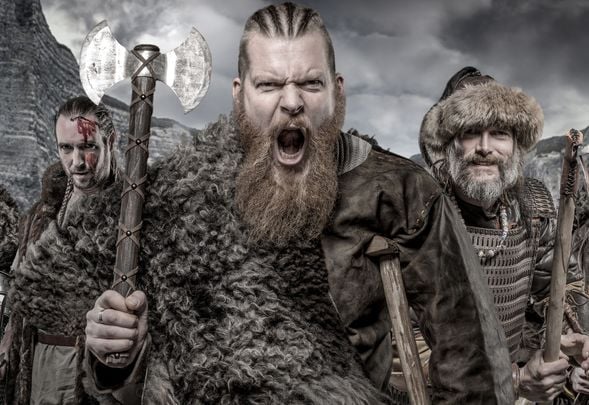Viking invasions made a lasting impression on the DNA map of Ireland, according to a massive study carried out by Trinity College Dublin.
In their study "Insular Celtic population structure and genomic footprints of migration," published in 2018, researchers at Trinity College Dublin reported that they believe the Viking and Norman invasions of Ireland may have made a more striking impression on the DNA makeup of the country than previously thought.
The researchers also discovered 23 new genetic clusters in Ireland not previously identified, leading to the belief that we may have far more Viking and Norman ancestry than previously evidenced.
“The long and complex history of population dynamics in Ireland has left an indelible mark on the genomes of modern inhabitants of the island,” co-author of the study Professor Russell McLaughlin told MailOnline.
“We have shown that using only genetic data, we can accurately reconstruct elements of this past and demonstrate a striking correlation between geographical provenance and genetic affinity.”
By comparing 1,000 Irish genomes with over 6,000 genomes from Britain and mainland Europe, genetic clusters within the west of Ireland, in particular, were discovered for the first time, leading the researchers to investigate if invasions from the Vikings and Normans to the east may have influenced genetics in that part of the country.
The genetics of the world’s estimated 80 million people who claim Irish heritage may now be more complicated than originally believed, but research such as this could go some way to identifying if there are any specific traits or illnesses that are linked to these genetic clusters.
“This subtle genetic structure within such a small country has implications for medical genetic association studies,” said Trinity College Dublin geneticist Dr. Ross Byrne.
“As it stands current corrections for population structure in study designs may not adequately account for this within-country variation, which may potentially lead to false-positive results emerging."
“We feel this will be particularly important in the analysis of rare variants as these are expected to be less uniformly distributed throughout a country."
“We intend to explore this further and identify if this structure should be accounted for in corrections.”
Dr. Byrne further said: “Previous research using Y-chromosome DNA showed little remaining signature of the Viking Ages in the DNA of Irish people.
"However, these older studies used less than 1% of the available genetic information and focused only on signals that could be read through the paternal line, which may not tell the entire story.
"By examining the remaining genetic information, we have shown that there is indeed a small but noticeable legacy of Viking influence in Ireland.”
The research from Trinity came just weeks after the Royal College of Surgeons and the Genealogical Society of Ireland in Dublin released their own research to suggest a strong influence of the Vikings on the DNA makeup of Ireland.
This team discovered genetic evidence of the Vikings in Ireland for the first time, although they only identified ten different genetic clusters across the country. These clusters were more in line with the ancient kingdoms and provinces in Ireland.
* Originally published in 2018. Updated in September 2023.

Love Irish history? Share your favorite stories with other history buffs in the IrishCentral History Facebook group.




Comments